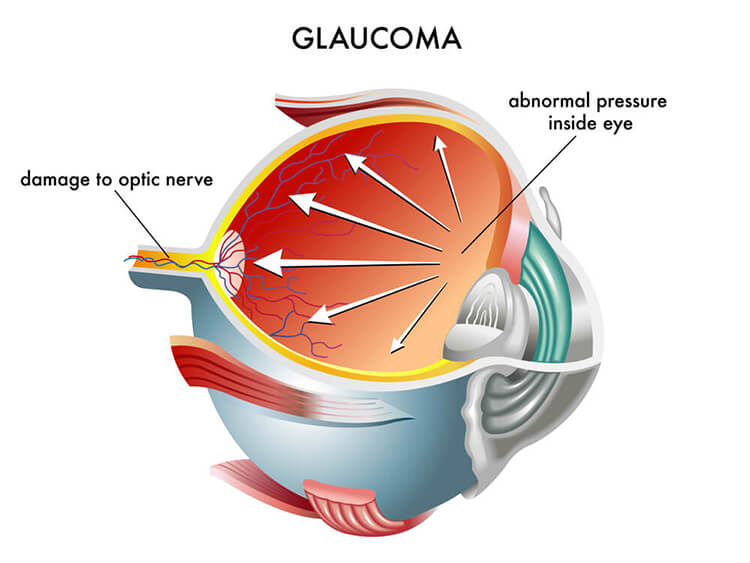New York Glaucoma
Glaucoma is a group of diseases that damage the eye’s optic nerve. The eye needs a certain amount of pressure to work properly. However, Glaucoma occurs when the normal fluid pressure inside the eyes rises. Glaucoma is often called ‘the sneak thief of sight’. The disease may have no warning signs and is one of the leading causes of blindness.
Our team approach to the screening, monitoring and the medical treatment of glaucoma ensures our patients receive the most up to date approach of the prevention of damage to your vision from this ocular disease. If necessary, our board-certified ophthalmologist, Dr. Rosenthal is available to perform the most advanced laser and/or surgical procedures.

What are the Risk Factors of Glaucoma?
- Age – With increasing age, Glaucoma becomes more common.
- Family history – If a family member has Glaucoma you should have regular eye exams.
- African or Spanish ancestry –Glaucoma may appear at an earlier age and be more severe.
What are the Types of Glaucoma?
The two main types of Glaucoma are Open-angle Glaucoma and Angle-closure Glaucoma. Both are caused by an increase of intraocular pressure (IOP) or pressure inside the eye.
Open-angle Glaucoma is the most common form of Glaucoma. At first, open-angle glaucoma has no symptoms, causes no pain, and you may not notice any loss of sight for many years. Increased eye pressure is caused by the slow blockage of the drainage canals. Without treatment; people with Open-angle Glaucoma will slowly lose their peripheral (side) vision. Gradually central vision may decrease until no vision remains. If caught early and treated, this type of Glaucoma responds well to a regimen of medications.
Angle-closure Glaucoma can occur if the space between the cornea and the iris is too narrow or closed. If the pupil gets bigger than the angle can accommodate, or if the pupil’s size changes too fast, that causes the iris’s outer edge to bunch up and block the drainage canals. As with Open-angle Glaucoma, blocked drainage canals cause the IOP to increase, which in turn damages can optic nerve. Symptoms include severe pain and nausea, halos around lights as well as redness of the eye and blurred vision. If you have these symptoms, seek medical treatment immediately.
How do you Treat Glaucoma?
Once diagnosed with glaucoma, our doctors may prescribe medications to reduce the pressure by slowing the flow of fluid into the eye or others that help to improve fluid drainage. There are many medications for Glaucoma and they may be in the forms of eye drops or pills. It is extremely important to follow your doctors’ instructions and take your medications properly.
What are the Surgical Options of Glaucoma?
New technologies are emerging for Glaucoma surgery and at Fifth Avenue EyeCare & Rosenthal Eye Surgery, we are focused on giving our patients the most up to date procedures to treat Glaucoma. Some of the types of surgical procedures used are:
• Laser Iridotomy – Laser Iridotomy uses a very focused beam of light to create a hole on the rim of the iris to help decrease pressure in the eye.
• Laser Trabeculoplasty – Laser can be used to open and increase the outflow of fluid from the “angle” of the eye, thus decreasing eye pressure.
• Trabeculectomy – Surgical treatments include removal of a small portion of the “angle” area of the eye allowing aqueous drainage.
• Valve Implant – New developments include the placement of a small valve to control the pressure of glaucoma.
Please read “Glaucoma: Preventing the Visual Damage” by Dr. Gorman
